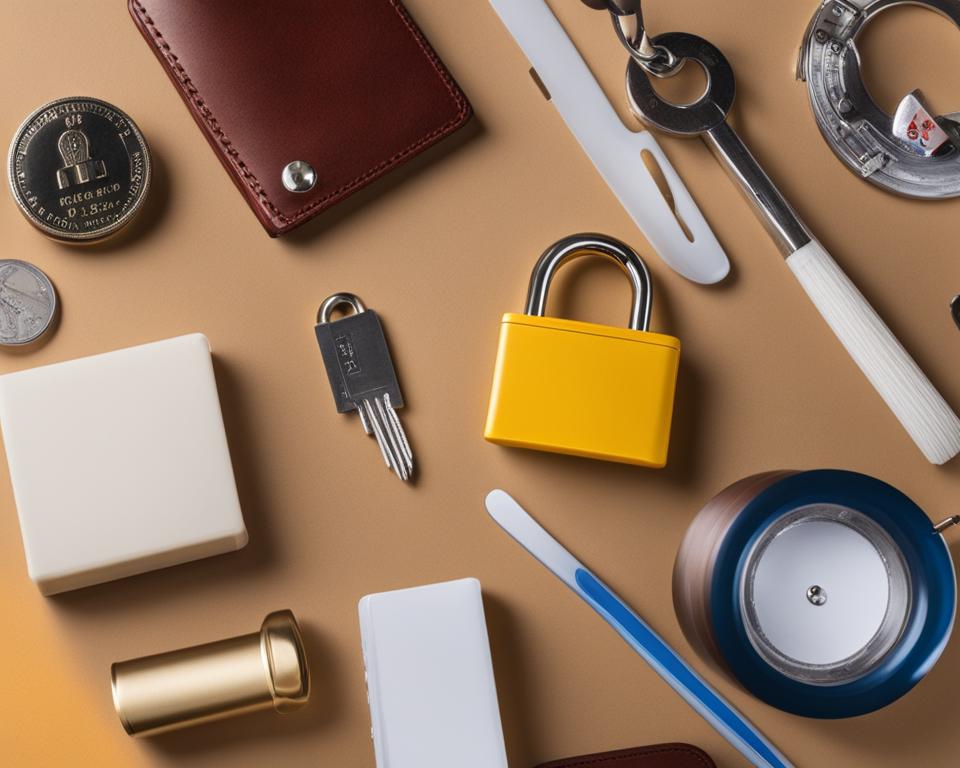Create Secure, Easy-to-Remember Passwords
Adverts
With the increase in threats from intrusions and cyber attacks, it is essential to know how to create secure passwords to protect your information online. In this article, we'll cover tips and strategies for creating strong passwords that are easy to remember. These tips are based on multiple trusted sources, including cybersecurity experts.
Important points
- Use a combination of many characters to create secure passwords.
- Include different types of characters such as uppercase, lowercase, numbers and symbols.
- Change your passwords regularly, especially after suspected unauthorized access.
- Avoid using personal information when creating your passwords.
- Enjoy password management tools and the two-step authentication to increase security.
Create secure passwords and easy to remember is essential to protecting your information online. With the right strategies, you can significantly increase the security of your accounts and keep your personal information protected on the internet.
Adverts
Create passwords with many characters
One of the first tips for creating secure passwords is to use a combination of many characters. Most data theft programs perform brute force testing, which means they try different combinations until they find the correct password. Therefore, it is recommended that passwords have at least eight characters, but the ideal is to create passwords with between twelve and sixteen characters. This significantly increases password security by making it more difficult for hacking programs to guess the correct combination.
To get a better idea of the importance of create long passwords, see the example below that shows the average time needed for a brute force program to discover a password based on the number of characters:
Adverts
| Number of Characters | Average Time to Discover the Password |
|---|---|
| 8 characters | 2 days |
| 12 characters | 1 month |
| 16 characters | has not been completed |
As you can see, the more characters you add to your password, the longer it would take for an attack program to crack it. That's why, create long passwords is an effective strategy for protecting your personal information.
Enter different characters
Another important strategy for creating secure passwords is to use different types of characters. Instead of just using letters, it is recommended to make a letter combination upper and lowercase, numbers and symbols. However, it is important to avoid using personal information, such as names or dates of birth, as this data can be easily found on social networks. Mixing upper and lower case letters and adding symbols makes the password stronger and more difficult to guess.
Think of a word or phrase that is easy for you to remember, and then replace some of the letters with numbers or symbols. For example, instead of using the password “secret123”, you can change it to “s3gRd0!23!”. That letter combination uppercase, lowercase, numbers and symbols creates a more complex password that is less susceptible to attacks.
Additionally, you can also use keywords related to the service or account you are using. For example, if you are creating a password for your email, you can use words like “mail”, “messages”, “inbox” and add variations of letters, numbers and symbols to make it more secure.
By entering different characters in your passwords, you increase their complexity and security, making them more difficult for hackers to crack. Remember to create unique passwords for each account, avoiding using the same password on different services.
Example of password with different characters:
| Character Type | Example |
|---|---|
| Capital letter | A, B, C |
| Lower case | a, b, c |
| Number | 1, 2, 3 |
| Symbol | !, @, # |
Change your passwords regularly
It is essential to ensure the security of your accounts by changing your passwords regularly. It is recommended to change passwords whenever unauthorized access to your account is suspected. For example, if you receive an email informing you of a login on an unknown device. Additionally, it is important to change your passwords after using public computers or in untrusted locations. This practice helps prevent malicious people from gaining access to your personal information.
Keeping the same passwords for a long period of time increases the risk of security breaches. Hackers are always looking for ways to crack passwords, and if you don't change them regularly, you can leave yourself vulnerable to attack.
Therefore, remember to change your passwords frequently to reduce the chances of falling victim to a cyber attack. Using updated passwords makes unauthorized access difficult, thus protecting your personal and financial information.
When to change your passwords?
- If you suspect that your account has been hacked;
- When you receive an alert of suspicious activity on your account;
- After using public computers or other untrusted devices;
- Regularly, every 3 to 6 months, as a preventative practice.
By changing your passwords regularly, you strengthen your online security and prevent attackers from guessing or cracking your old passwords.
Do not use personal information
Avoid using personal information to create your passwords, such as names of people close to you, special dates, car license plate or pet names. This information is easy to discover, especially through social networks. By avoiding personal information, you increase the security of your password, making it more difficult for hackers to guess.
| Tips to avoid personal information in passwords: |
|---|
| Avoid using names of people close to you. |
| Don't use birthdays or other personal events. |
| Avoid information that can be easily found on social networks. |
| Instead, make combinations of characters that don't directly relate to your personal life. |
Using personal information to create passwords makes your account vulnerable to attacks, as this information can be easily discovered by hackers. Choose passwords that are difficult to guess, combining upper and lower case letters, numbers and symbols.
Avoid using personal information in your passwords. This is one of the basic practices to increase the security of your online accounts. Remember that strong and unique passwords are essential to protect your information from possible intrusions.

By following this recommendation, you will be taking an important step towards protecting your information against possible attacks. Don't let hackers easily discover your password through obvious personal information. Stay safe and protected!
Count on the help of technology
A way to facilitate the creation and management of secure passwords is to use password management tools. There are specific applications and programs for this that allow you to store all your passwords in a safe place. Some examples of password managers are Buttercup, Enpass and Lastpass. These tools help keep your passwords secure and can even generate random, complex passwords for you.
| Manager Name | Resources |
|---|---|
| Buttercup | Store passwords in the cloud |
| Enpass | Password auditing, two-factor authentication |
| Lastpass | Password autofill, cross-platform sync |
Two-step verification
To further increase the security of your accounts, it is recommended that you activate two-step verification. This additional feature requires you to provide a second form of authentication in addition to your password, such as a code sent via SMS, an authentication app, or a fingerprint. Two-step verification makes unauthorized access to your accounts more difficult by requiring an additional level of security to log in.
| Benefits of 2-Step Verification | Examples of authentication methods |
|---|---|
| Greater login security | Code sent by SMS |
| Prevents unauthorized access | Authentication App |
| Reduces the risk of identity theft | Fingerprint |
In addition to making unauthorized access more difficult, two-step verification also provides greater peace of mind when using your online accounts. With this additional layer of security, you will have more confidence in authentication and will be protected against data theft attempts. So be sure to enable two-step verification whenever possible.
Here is an example of how to enable two-step verification on an email account:
- Access your account security settings.
- Look for the two-step verification option.
- Follow the instructions provided to enable two-step verification.
- Choose the authentication method you prefer and follow additional steps if necessary.
- When logging into your account, you will need to provide your password and your chosen second form of authentication.
With two-step verification enabled, you'll be adding an extra layer of protection to your online accounts. Stay safe and secure when using internet services.
Stay tuned!
Two-step verification is not invulnerable to attacks, but it makes unauthorized access to your accounts significantly more difficult. Make sure to choose secure authentication methods and never share your login information or verification codes with third parties.
Protect your information and enjoy a safer online experience with two-step verification.
Conclusion
By creating secure, easy-to-remember passwords, you ensure your information is protected online. Using tips such as using many characters, entering different characters, change passwords regularly and avoid personal information, you increase the security of your accounts. Furthermore, count on the help of password management tools and taking advantage of features such as two-step verification can ensure the security of your information on the internet. Protect yourself from hacker attacks and keep your personal information safe.

